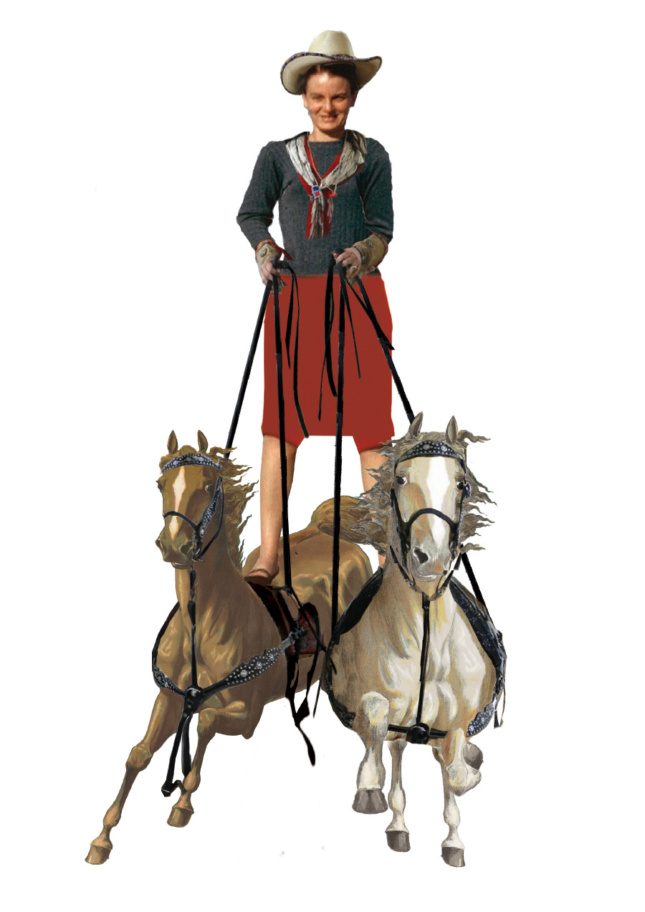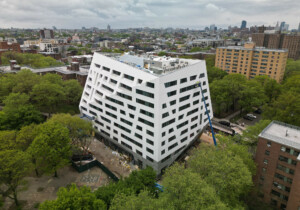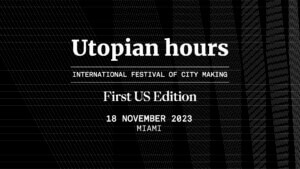This interview of Denise Scott Brown is excerpted from Your Guide to Downtown Denise Scott Brown, an exhibit held at the Architekturezentrum Wien in Vienna, now available in book form via Park Books. The interview was conducted on May 22, 2018, before the passing of Robert Venturi in September, and revised on May 7, 2019, by Denise Scott Brown and Jeremy Eric Tenenbaum.
Jeremy Eric Tenenbaum: What are your great achievements?
Denise Scott Brown: I had to live through a difficult childhood, not given to self-esteem. I had to live through the tragedy of my [first] husband’s death. I had to find the gumption to do the things I needed to do and thought I couldn’t.
Somehow I got through all that and made an oeuvre I feel proud of, sort of. Having said that, I think I’ve managed to find a way to live with uncertainty, which was difficult for me. And perhaps I’ve managed to help some others do that. Along with Bob, I think I’ve worked through issues of form and design and communication and brought all that together into “a beautiful table with four legs”—comparable to Vitruvius’s three-legged table. Out of that, I’ve tried to draw a beauty, but an agonized beauty. And the kinds of people I seem to associate best with are the ones with a certain striving for the same.
That’s one side. On the other, I’m happy to have helped to define advocacy architecture and to have practiced some of it. I’m happy to have helped promote women in architecture. And now I end my career by trying to sum up what needs to be summed up. But I’m missing the thing I became addicted to, which was design. That was my great joy—but it was complex with me.
I’m also very, very happy to have lived beside Bob and to have managed the sturm und drang—and to have jointly brought out work we could both be proud of. And to have produced a son who’s having a great career, who has found his passion, who will go on finding passions.
We worked in this house all our lives. Now that it’s a home office, you find someone working in every room, tucked in a chair here or there. One of them said, “I’ve never been in a house where everyone there both lives and works.” So I’ve called this our Peaceable Kingdom—mostly peaceable.
JET: The retirement that others look forward to is not the retirement you want for yourself?
DSB: I’ve got too many things to do! All these people come to talk to me and I love talking to them. They ask why I don’t make room to smell the roses, and I say, the roses are right on my drawing board! I’m returning to the things I began early in life and had to leave off because of professional work—and hindsight makes them better.
When he asked, I told our financial adviser: “Bob and I won’t go on cruises. We just want to go on being elderly academics.” He replied, “Well, if you do go, please consider going on a tramp steamer and not by the QE2 [the Queen Elizabeth 2 ocean liner].” So I keep asking myself, am I buying the QE2?
We’ve tried to donate money to charity as much as we could. One great opportunity was an unexpected windfall. One day a voice on the phone with a South African accent asked me: “Is this Mrs. Ventuuuri?” He said I had an account in South Africa, produced from a very small investment my father had made for each of his children in 1945. By 1985 it had become a tidy sum.

JET: This sounds like such a scam!
DSB: It was a scam. He was a bounty hunter. He said, “You have to sign this document and let me take a third of the money.” And I realized there was nothing else I could do, so I signed—and he disappeared. The rest of the money waited in the account. I wanted it to go to students at my old school—some student whose teachers thought she could do better, a B-student who could be an A-student. When I was there, I saw our headmistress take kids who were, let’s say, raw and rough, and after they were with us a few years they would get into medical school. She believed academic intelligence is one kind of intelligence but not the only kind. She had ways of teaching people and maintaining students’ self-esteem. And she did it for me—she discovered things about me that she really appreciated and her appreciation really helped me grow. I hoped the school would still be like that, with that sense of community.
So the school did what I requested: They found Gugu Ndlovu, daughter of a Zulu teacher. And she finished there and did very well, and when she applied to all the medical schools in South Africa, she got into every one. And for me…it was…
[Silence. Denise cries. She clutches her dress with her hands, looking down.]
Funny things are…moving. Some things are moving…
So, anyway, nevertheless, I didn’t hear from the school for a while. But recently I met a young South African woman traveling with her Venezuelan boyfriend, both going back to South Africa. And I said, please, would you go to my school and talk to them? We arranged for the money to be placed with their bursary fund, to quickly go where it’s intended. And when that money is given, it should be given in the name of Robert Scott Brown. And so this is solved at the end of my life. It’s a nice story.
I have been a circus horse rider between architecture and urbanism most of my life. But reining together animals that have been tugging apart over five decades has made for a bumpy ride. My role as an architect and planner takes in more than physical planning or urban design. I have also penetrated beyond both architecture and planning toward the social sciences at one end and art and iconography at the other. When you have all these systems and all their functions and all their rules, it helps to understand Mannerism. Because these systems have to bend, some more and some less, to get something that works—but it’s also a way to look for beauty. That’s my view of functionalism. It has a moral component I uphold but an aesthetic component I love.











